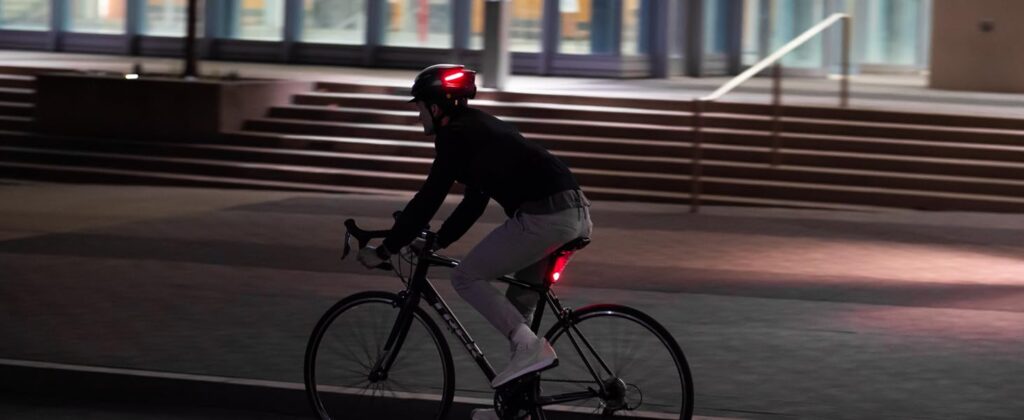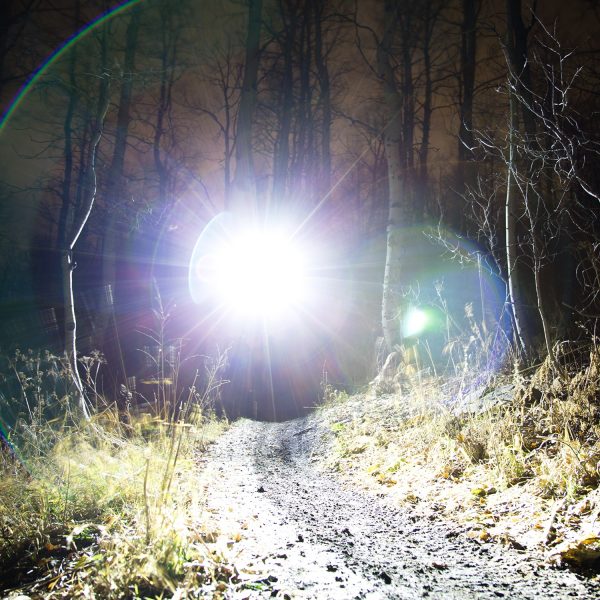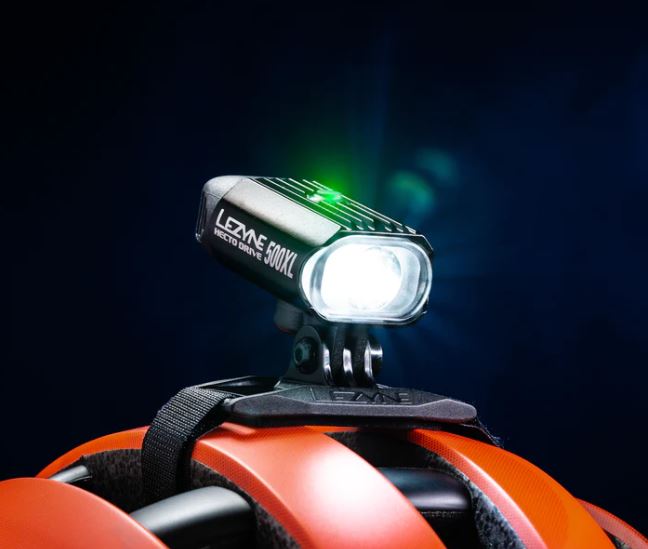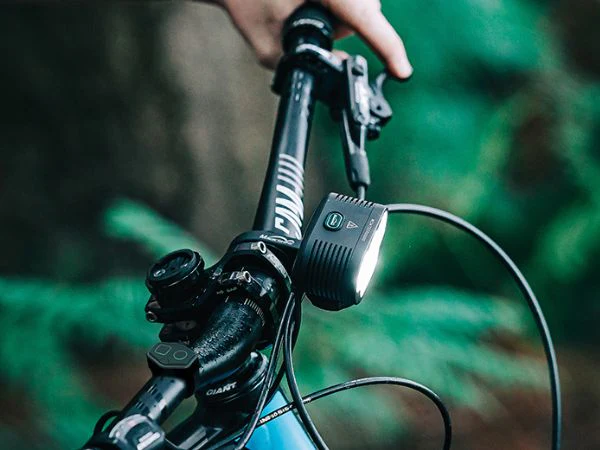Illuminating the Path: Choosing Between LED vs. Halogen vs. HID Bicycle Lights

Key Point Summary of LED vs. Halogen vs. HID Bicycle Lights:
- LED Lights: Known for their efficiency, durability, and long battery life, LED lights are a popular choice among cyclists for their versatility and low maintenance.
- Halogen Lights: These offer a warm, natural light and were the standard before LEDs and HIDs became prevalent. They’re more power-hungry and have a shorter lifespan.
- HID Lights: High-Intensity Discharge (HID) lights are incredibly bright and efficient but come with a higher price tag and are less durable than LEDs.
As a masters cyclist with a diverse background in mountain biking, gravel grinding, and cyclocross racing, I’ve navigated through a spectrum of lighting conditions and learned the importance of having the right type of light for every ride. Whether you’re a beginner cyclist or have a few mid-level experiences under your belt, understanding the differences between LED, halogen, and HID bike lights can significantly impact your riding safety and enjoyment. Here’s a breakdown of these lighting technologies, designed to light your way through the decision process.
LED: The Modern Standard
LED (Light Emitting Diode) lights have taken the cycling world by storm, thanks to their incredible efficiency, durability, and versatility. Unlike halogen bulbs, LEDs don’t have a filament that can burn out, making them more resistant to bumps and vibrations—a common scenario on mountain and gravel trails. They also provide a bright, focused light that can be adjusted according to the rider’s needs, from wide beams for dark trails to focused beams for road riding. Additionally, their low power consumption means batteries last longer, making them ideal for long rides or bikepacking adventures.
One of my first experiences with LED lights was during a night mountain bike race. The difference in visibility and how it affected my confidence and speed was night and day compared to my old halogen setup. The LED light cut through the darkness with a crisp, bright beam, allowing me to navigate technical sections with ease.

Halogen: The Old Guard
Halogen lights have a warm, natural quality that many cyclists appreciate, especially those who have been riding since before LEDs became ubiquitous. They work by passing an electric current through a tungsten filament, which is enclosed in a small quartz capsule filled with halogen gas, producing light that’s bright and welcoming. However, they are not as energy-efficient as LEDs, meaning they drain batteries or require larger power sources. Additionally, the filament makes them susceptible to damage from vibrations and impacts.
HID: High Intensity, High Investment
HID (High-Intensity Discharge) lights are known for their incredible brightness and efficiency. They work by creating an arc of electricity between two electrodes in an atmosphere of xenon gas, producing a bright, white light that can illuminate the road or trail far ahead of the rider. Their efficiency is on par with LEDs, but they tend to be more expensive and less durable, making them a less common choice for most cyclists. However, for riders needing the brightest possible light and willing to invest in it, HIDs can be the way to go.
My encounter with an HID light was during a 24-hour relay race where night-time visibility was crucial. The HID light we used was like turning on daylight, allowing for high-speed descents even in the dead of night. The downside was its delicacy; a minor crash resulted in a broken light, a risk that’s less of a concern with rugged LEDs.

Making Your Choice
When deciding between LED, halogen, and HID lights for your bicycle, consider what matters most to you: efficiency and durability, natural light quality, or maximum brightness. For most riders, LED lights offer the best combination of performance, durability, and value. They’re suitable for a wide range of conditions, from urban commuting to backcountry adventures, and advancements in technology continue to improve their brightness and functionality.
Halogen lights, while somewhat outdated, might appeal to traditionalists or those looking for a softer, more natural light. And for those who need the ultimate in brightness and are prepared for the associated costs, HID lights can light up the night like no other.
Final Thoughts
In conclusion, choosing the right bicycle light is crucial for safety and confidence on your rides. My journey through the evolution of bike lighting technology, from halogen to LED and experiencing HID, has shown me the importance of matching your lighting to your cycling needs. Whichever technology you choose, ensure it lights up your path, enhances your visibility to others, and aligns with your cycling adventures.
Finding the best bicycle lights depends on several factors including your riding conditions, preferences, budget, and the features you value most, such as brightness, battery life, durability, and ease of mounting. As of my last update, here are some guidelines and recommendations based on general preferences and needs:
For Urban Commuting:
- LED Lights: Look for models with both strong front lights to illuminate your path and flashing rear lights to ensure you’re seen by motorists. Lights with integrated rechargeable batteries and USB charging offer convenience and eco-friendliness.
- Recommendation: The Cygolite Metro series or Light & Motion Urban lights are excellent choices, offering robust construction, good visibility, and multiple lighting modes for varying conditions.
For Road Cycling:
- Brightness and Beam Pattern: Choose lights with a focused beam for long-distance visibility without blinding oncoming traffic. Front lights should be at least 400 lumens, while rear lights should be bright enough to be seen in daylight.
- Recommendation: The Garmin Varia series not only provides excellent visibility but also includes radar technology to alert you of approaching vehicles from behind.
For Mountain Biking:
- High Brightness and Durability: Look for high-output lights (600 lumens and up) with durable, weather-resistant construction. A combination of handlebar and helmet-mounted lights can provide versatile illumination options.
- Recommendation: The NiteRider Pro series or Lezyne Super Drive are favored for their high lumens, durability, and the ability to light up technical trails effectively.
For Gravel and Adventure Riding:
- Versatility and Battery Life: Long battery life and the ability to switch between high-output for dark trails and energy-saving modes for long rides are key. Look for lights that can be easily attached to different parts of the bike or gear.
- Recommendation: Bontrager Ion Pro RT front light and Flare RT rear light offer excellent visibility, versatile mounting options, and Bluetooth connectivity for adjusting settings on the go.
Additional Tips:
- Always consider lights with IPX water resistance rating for reliability in all weather conditions.
- Daytime Running Lights (DRLs): Even during the day, using lights can significantly increase your visibility to others.
- Test and Reviews: Before purchasing, look for online reviews and test videos to see how the lights perform in real-world conditions.
Given the rapid advancements in technology, it’s also a good idea to check the latest product releases and reviews for the newest features and improvements in bicycle lighting.

FAQ
Which is better LED or halogen headlights for bike?
LED headlights are better for bikes due to their higher efficiency, longer lifespan, better durability, and lower power consumption compared to halogen bulbs.
Which is better HID LED or halogen?
LED is generally better than both HID and halogen for most cycling needs because it offers a good balance of brightness, efficiency, durability, and battery life.
Are HID lights better than LED?
Not necessarily. While HID lights are very bright and efficient, LEDs are more durable, have longer lifespans, and are more energy-efficient, making them a better choice for most biking conditions.
Which bulb is best for bike?
LED bulbs are the best choice for bikes, providing the best overall performance in terms of brightness, power efficiency, durability, and longevity.





